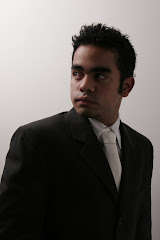
Andrew Stuart "Andy" Tanenbaum (born 1944) is a professor of computer science at the Vrije Universiteit, Amsterdam in the Netherlands. He is best known as the author of MINIX, a free Unix-like operating system for teaching purposes, and for his computer science textbooks, regarded as standard texts in the field. He regards his teaching job as his most important work.
He is well recognized for his textbooks on computer science:
Operating Systems: Design and Implementation and MINIX[3] were Linus Torvalds' inspiration for the Linux kernel. In his autobiography Just For Fun, Torvalds describes it as "the book that launched me to new heights".
These ten books have been translated into 20 languages: Basque, Bulgarian, Chinese, Dutch, French, German, Greek, Hebrew, Hungarian, Italian, Japanese, Korean, Persian, Polish, Portuguese (for Brazil), Portuguese (for Portugal), Romanian, Russian, Spanish (for Latin America), Spanish (for Spain), and Thai. They have appeared in over 120 editions and are used at universities around the world.
In 1987, Tanenbaum wrote the first open-source clone of UNIX, called MINIX (MIni-uNIX), for the IBM PC. It was targeted at students and others who wanted to learn how an operating system worked. Consequently, he wrote a book[6] that listed the source code in an appendix and described it in detail in the text. The source code itself was available on a set of floppy disks. Within three months, a USENET newsgroup, comp.os.minix,[7] had sprung up with over 40,000 readers discussing and improving the system. One of these readers was a Finnish student named Linus Torvalds who began adding new features to MINIX and tailoring it to his own needs. On October 5, 1991, Torvalds announced his own (POSIX like) operating system, called Linux, which originally used the MINIX file system but is not based on MINIX code.
Although MINIX and Linux have diverged, MINIX continues to be developed, now as a production system as well as an educational one. The focus is on building a highly modular, reliable, and secure, operating system. The system is based on a microkernel, with only 4000 lines of code running in kernel mode. The rest of the operating system runs as a number of independent processes in user mode, including processes for the file system, process manager, and each device driver. The system continuously monitors each of these processes, and when a failure is detected is often capable of automatically replacing the failed process without a reboot, without disturbing running programs, and without the user even noticing. MINIX 3, as the current version is called, is available under the BSD license for free at www.minix3.org.








